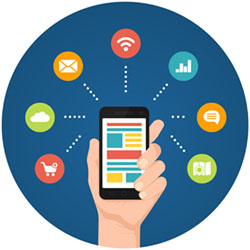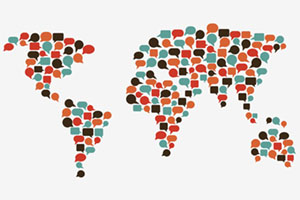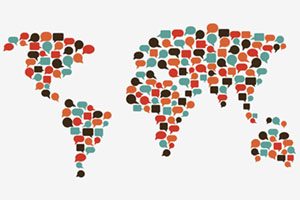 As brands realize the power of video marketing, it is quickly becoming a popular way of attracting and engaging consumers.
As brands realize the power of video marketing, it is quickly becoming a popular way of attracting and engaging consumers.
Smartphone and tablet use on the go means that people can access information anytime and anywhere. People use their devices to browse the Internet in cafes, on trains, at home and at work.
It is known that the brain interprets visual information far faster than text and that more than 65% of people are visual learners. It is also a lot easier and less demanding to watch a video than it is to read a text, which is important in today’s busy world. According to Cisco, 69% of consumer Internet traffic will be via video by 2017.
That is why big brands are making use of video to get their message across. According to YouTube statistics, almost one third of people with Internet connection visit the website, which has local versions in 88 countries.
Not only is video a great way to entertain and inform, but it is also an easy and clear way to give instructions. What better way to give added value to your customers than by creating an instructional video that they will find far easier to follow than a long piece of written text? It will also ensure better understanding of product features and extras that may be difficult to explain in text.
As a company, you can use a video to showcase your product or service to customers domestically or abroad. But in order to be successful, there are some important items to consider.
Localization
Create a video that will appeal to your customers no matter where they live. Research the use of colors and images carefully, so that they do not offend the audience. With this advance consideration, the same video can be watched by people from various countries.
Translation
Try not to use colloquialisms or slang in your video because they are hard to translate and won’t always have the same meaning to all audiences. Putting the video into clear language will ensure your video is watched and shared in any language. Also consider there is a far wider reach obtained by translating your message for target audiences, rather than leaving it solely in English or relying on graphics.
Search Engine Optimization
Your video needs to use keywords in order to be found. Video keywords are important because Google will normally put video results on the first page. If you are unsure of the right keywords, you can conduct your own search. If videos appear on the first page, you know you are on the right track.
The video title should be concise, but compelling. Use around 65 characters and include keywords in the title. Do not forget the meta description. This is the sentence you see under the title when you have carried out a search. It gives a little more information about your product or service and should also include keywords.
If you want to engage consumers, increase brand promotion and attract new customers, then using video marketing should be on your resolutions list for 2017.
______________________________
Terralingua is a global translation and localization provider that works with some of the world’s top brands. Our translation specialists have a deep understanding of their country’s culture and are experts in their field. If you need to put your business on the global platform, or need any advice about your translation goals for 2017, please visit our website for further details.

 It is a new year with new markets and products. You may have been tasked with obtaining translation quotes to update your literature in other languages. If so, you must know that a question frequently asked by providers when obtaining quotes is if you have an existing translation memory. Not wanting to be hassled with another item to obtain, you may be very tempted to just say “no”.
It is a new year with new markets and products. You may have been tasked with obtaining translation quotes to update your literature in other languages. If so, you must know that a question frequently asked by providers when obtaining quotes is if you have an existing translation memory. Not wanting to be hassled with another item to obtain, you may be very tempted to just say “no”.

 The fastest way to provide current information to the majority of customers worldwide is through the World Wide Web, also known as your online presence. But do your site and your social media posts “speak to” everyone that may be interested in your product or service? According to Common Sense Advisory research, a company wanting to reach 90% of the online world will need to market their products and/or services in 14 languages, including Arabic and Chinese.
The fastest way to provide current information to the majority of customers worldwide is through the World Wide Web, also known as your online presence. But do your site and your social media posts “speak to” everyone that may be interested in your product or service? According to Common Sense Advisory research, a company wanting to reach 90% of the online world will need to market their products and/or services in 14 languages, including Arabic and Chinese.
 In some fields of translation, mistakes may cause embarrassment and turn out to be costly, but can be quickly rectified without causing harm to customers. Some lost-in-translation stories even make us laugh, as in the case of the bank that wanted their catchphrase to be “assume nothing” but it was unfortunately translated to mean “do nothing.”
In some fields of translation, mistakes may cause embarrassment and turn out to be costly, but can be quickly rectified without causing harm to customers. Some lost-in-translation stories even make us laugh, as in the case of the bank that wanted their catchphrase to be “assume nothing” but it was unfortunately translated to mean “do nothing.” If you have ever tried to learn a foreign language you may well have been, at some time or other, introduced to idioms. Idioms are a group of words that have a meaning that is different from each word on its own. For new language learners, idioms simply do not make sense.
If you have ever tried to learn a foreign language you may well have been, at some time or other, introduced to idioms. Idioms are a group of words that have a meaning that is different from each word on its own. For new language learners, idioms simply do not make sense. When developing content, writers have foremost in their minds the target audience – the people reading and using their material. Target audience familiarity with the subject matter and their familiar jargon must be considered.
When developing content, writers have foremost in their minds the target audience – the people reading and using their material. Target audience familiarity with the subject matter and their familiar jargon must be considered.

 In today’s global marketplace, we will often find ourselves negotiating with people from other countries. When you are in this position, though you and the person you are negotiating with may be communicating in the same language, you should not assume that both of you conduct business the same way or have the same customs.
In today’s global marketplace, we will often find ourselves negotiating with people from other countries. When you are in this position, though you and the person you are negotiating with may be communicating in the same language, you should not assume that both of you conduct business the same way or have the same customs.